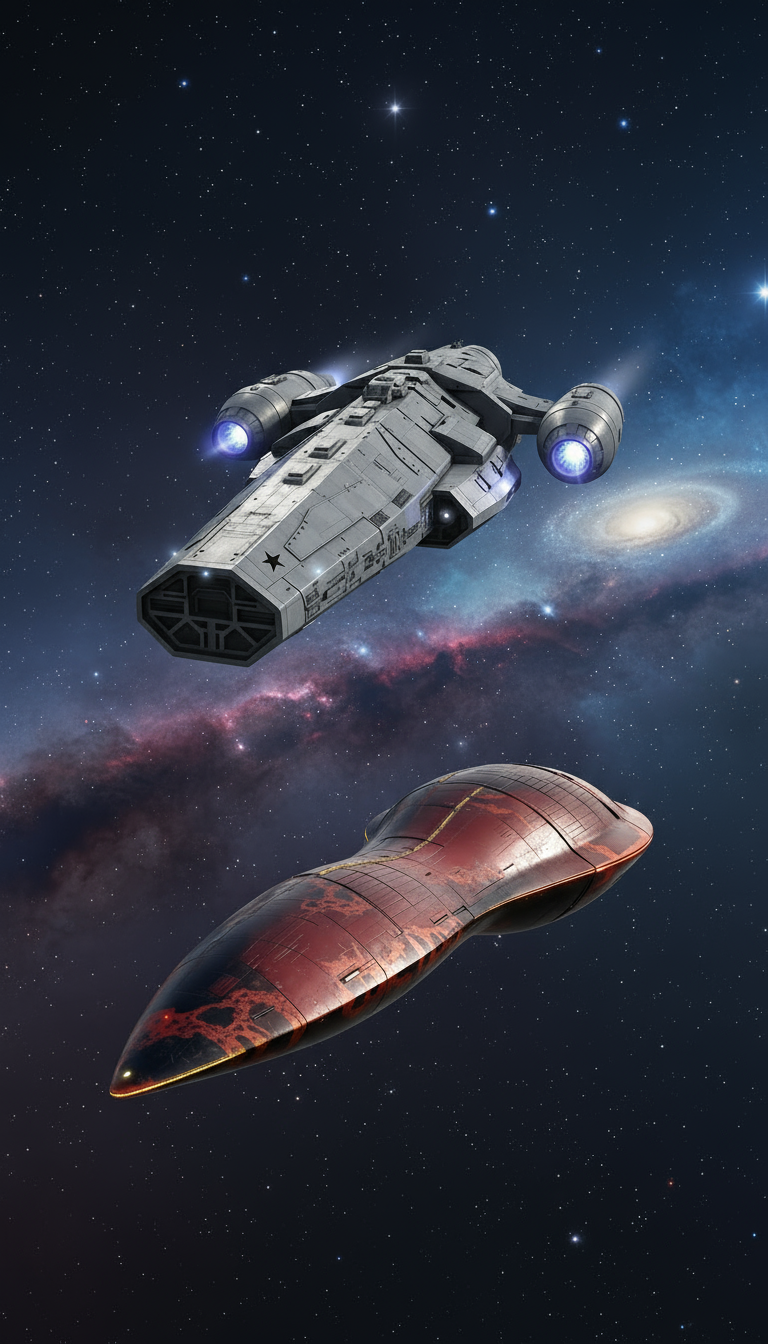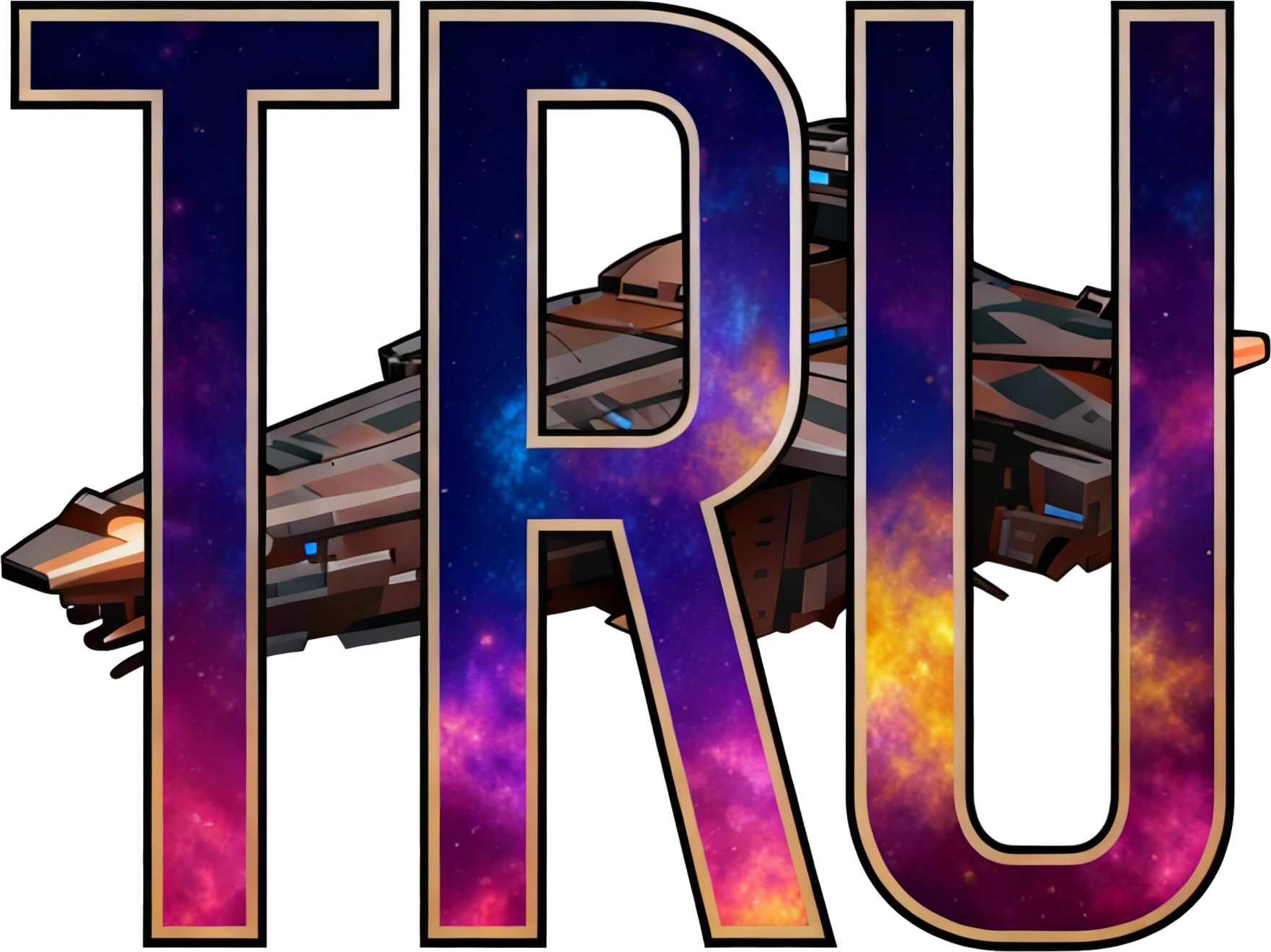First Steps

Kunlan Colony, Chinese Sector, January 17, 2157
The year was 2157 when an anomalous signal interrupted the quiet rhythm of the Chinese colony on Kunlan. Deep space scanners detected an artificial transmission far beyond the established range of Terran colonies. Dr. Li Wei, head of the planetary science division, reviewed the data with growing excitement. “This is no natural phenomenon,” she whispered. The signal originated near the Terran Corridor, in a sector long thought uninhabited.
She wasted no time. Within days, the Qingdao, an exploration vessel under the command of Captain Zhou Han, was prepared for launch. Zhou was a veteran officer, trained in first contact procedures and known for his calm under pressure. As the engines ignited and the ship rose from Kunlan’s surface, he could not shake the feeling that this mission would change everything.
Terran Corridor, February 2, 2157
Approaching the coordinates of the signal in what would later be designated GL 54, the Qingdao encountered a formation of unknown vessels. Their surfaces glistened like black glass, moving in silent formation near an asteroid cluster. They bore no resemblance to any Terran ship. Zhou ordered a full sensor sweep, but the instruments failed as one of the vessels emitted a pulse that disrupted every system on board.
Moments later, the interference resolved into sound. The translation algorithms pieced together a message: “We are the Cetian Consortium. State your purpose.”
Zhou steadied his voice and replied, “We are explorers from Kunlan, representing the Chinese colonial administration. Our mission is peaceful. We seek understanding.” His words echoed through the stillness of space as the crew held their breath.
After a long pause, the reply came. “Your species is unknown to us, but your intent appears genuine. Let us establish a dialogue.”
Near Cetian Vessels, February 3 to 10, 2157
For several days, the Qingdao remained near the alien formation while both sides exchanged fragments of language, data, and culture. Through patient translation, the crew learned that the Cetians had observed humanity for decades, monitoring its spread beyond the Terran Core. They had chosen this moment to reveal themselves because of the Tunnel Drive technology that had carried the Qingdao here.
“Our arrival was no accident,” Dr. Li remarked during a briefing. “We crossed their trade routes.”
Negotiations began soon after. The Cetians proposed an exchange of knowledge and resources. They offered navigational data and mineral rights in return for Terran mining expertise. It was the first dialogue of its kind between humanity and an extraterrestrial civilization.
Kunlan Colony, March 27, 2157
Word of the encounter reached Earth within weeks, sparking debate across the Terran Core. Some saw opportunity, others danger. The Chinese government issued statements of cautious optimism while quietly strengthening its patrols along the Terran Corridor. What else had the Cetians seen, and how much did they truly know?
On Kunlan, new departments formed to manage extraterrestrial relations. Teams of scientists, linguists, and defense analysts drafted protocols for future exchanges. For the first time in history, humanity had to define how it would speak as one species.
Qingdao, Return to Kunlan, April 5, 2157
As the Qingdao left Cetian space, Zhou stood on the bridge watching the alien ships fade into the black. “History has a strange way of finding us,” he said quietly. His crew was exhausted but resolute. They knew they had not just encountered a new intelligence—they had taken humanity’s first steps into a wider community of worlds.
Kunlan Colony, 2158 to 2160
The years that followed reshaped everything. The Chinese colonial administration and the Cetian Consortium forged a complex partnership built on trade, technology, and shared exploration. Cetian innovations in quantum computing and materials engineering flowed into Terran research, while human advances in propulsion and mining found their way into Consortium networks.
Markets on Kunlan thrived with the arrival of hybrid goods—Terran spices fused with Cetian bioproducts, alloys refined through alien processes. Delegations traveled to Earth to brief the United Nations, while quiet discussions began among the Terran powers, each seeking to understand what this new alliance meant for humanity’s future.
Kunlan Colony, Central Plaza, May 7, 2161
Four years after first contact, a ceremony was held in Kunlan’s central plaza. Captain Zhou, now retired, stood beside Dr. Li as she addressed the crowd. “We have seen the potential of cooperation,” she said. “We have learned that curiosity is the first bridge between worlds.”
Though the colony celebrated, unease lingered. The Cetians had shared much, yet questions remained. Were their motives as open as they claimed? To safeguard against imbalance, the Chinese government established the Resource Exchange Bureau to monitor every transfer of knowledge and material. Trust, they decided, must be tempered with vigilance.
Terran Corridor, Joint Outpost, September 3, 2167
The Cetian Consortium and the Chinese government began constructing shared stations along the Terran Corridor, turning the once-empty passage into a thriving trade route. These outposts symbolized cooperation, yet also served as silent sentinels watching one another’s movements.
Beneath the optimism, whispers persisted among military analysts. Some believed the Cetians’ reach extended farther than anyone knew, into sectors beyond human maps, where other civilizations might already be waiting.
Earth, United Nations Headquarters, February 14, 2192
Decades later, historians would look back on the events at Kunlan as the turning point that defined humanity’s interstellar destiny. The colony that once stood alone became the heart of Terran diplomacy. The Cetians, too, took a risk when they opened their borders to a young and ambitious species. Together they began the slow work of building trust across the stars.
Even now, the story of that first meeting continues to shape human thought. Each new alliance, each discovery, and each leap into the unknown traces its origin to those first steps—taken not in conquest, but in curiosity.
— Recorded Entry, Chinese Colonial Archives, Kunlan Colony
